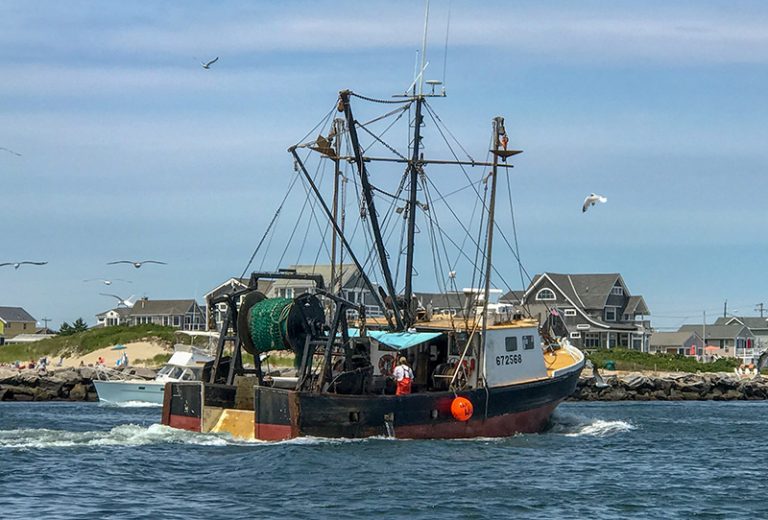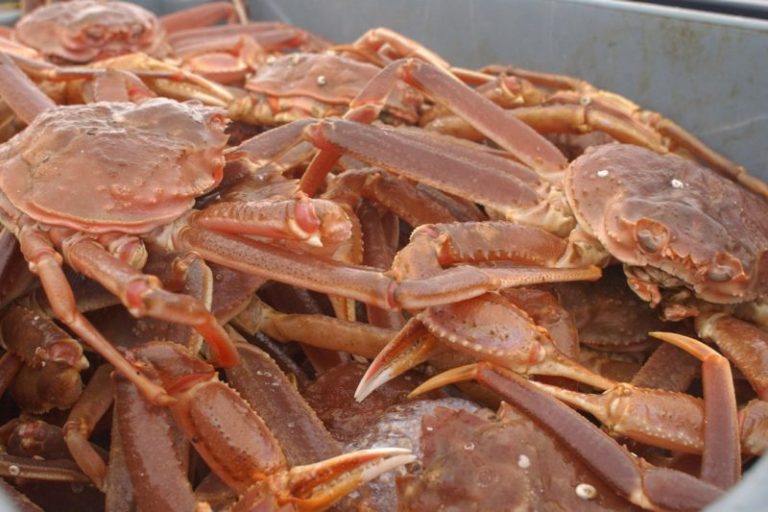Glass fibers – the rest of the story????? by Nils E. Stolpe/FishNet-USA
September 12, 2024
 Floating around (sorry!) is the surprising story that the fiberglass that is being donated gratis to our oceans by the offshore wind industry is harmless because the fibers that make it up are chemically inert. Reassuring, isn’t it?
Floating around (sorry!) is the surprising story that the fiberglass that is being donated gratis to our oceans by the offshore wind industry is harmless because the fibers that make it up are chemically inert. Reassuring, isn’t it?
Well, in words made immortal by George and Irwin Gershwin in Porgy and Bess, “it ain’t necessarily so.”
To put those immortal words in the proper real world (not NOAA or BOEM scientist’s) perspective, the asbestos fibers that are still being used legally in a whole bunch of manufacturing processes today are chemically inert on their own. You can chomp on and swallow asbestos fibers to your heart’s content, as long as they stay in large chunks, with no ill effects. According to the National Library of Medicine “asbestos fibers are basically chemically inert, or nearly so. They do not evaporate, dissolve, burn, or undergo significant reactions with most chemicals.”
So what’s the problem with asbestos? Why is keeping us living, breathing, etc. critters as far as possible from any exposure to asbestos dust, asbestos powder, asbestos shavings, asbestos scrapings, asbestos dreams, etc. so important? Most simply, because finely divided asbestos dust, powder, etc., when it is ingested or inhaled (or added to a poultice or an ointment when the moon is full, for all I know) is definitely not good for any of us, contributing to quite a few rather unpleasant maladies/conditions that we’d all be better off without.
Obviously, knowing what we know now a material being “inert” is no guarantee that it is completely harmless to inhale or to ingest. Believing otherwise is to hearken back to the long-gone days of alchemy. Back then when a substance was considered bad, it was considered bad in any way, shape or form. While today asbestos, when in big enough chunks is probably ok (just don’t chew it for too long), in little, eensy, weensy amounts it’s a killer. Those microscopic bits and pieces of asbestos can raise hell with some living tissues that they come into contact with. And they often do.
That’s the problem with asbestos.
So what’s the potential problem with glass fibers embedded in a plastic matrix that we call fiberglass (or fiber reinforced plastic–FRP)? You know, the stuff that an almost 1,000 foot tall “windmill” just inadvertently “enriched” a whole bunch of our ocean waters surrounding Nantucket Island with.
I’ve written before about what effective grinding machines our oceans are. They are particularly so in areas of high oceanic energy. While the ocean depths are fairly calm and stable, with not a lot of turbulence or currents, the margins of the ocean basins are an entirely different proposition. Big rocks are turned into smaller rocks which are turned into sand which is turned into silt. All because of the friction of being rubbed together with other rocks, with shell fragments, by the natural processes that go on in the shallow waters that characterize the ocean margins.
So what happens when a huge fiberglass rotor on an offshore generator (300+ feet long and still enlarging as wind generators become larger-and more efficient) delaminates and takes a dive into one of our oceans? In fairly short (geologically speaking) order it’s broken into thousands of smaller glass fibers embedded in a possibly “defective” plastic matrix held together with possibly “defective” adhesives. It gets ground up. And it’s very likely that a significant amount of it gets ground up into silicon “shards”-some of which become incorporated into the plankton.
That’s very possibly one of the initial steps in turning giant wind turbine blades into what will eventually become microscopic glass microfilaments.
Many of the filter-feeders out there, either living in or attached to the bottom, or floating around as part of the plankton, have been gifted by evolution with the ability to (sometimes) pick and choose amongst planktonic food and a bunch of non-food that has been cluttering up the oceans for eons. The food gets eaten. The non-digestibles either get dumped or get incorporated into the oceanic food chain.
We don’t have much of a clue about the effects on living creatures- including Homo sapiens-of these silicon shards once the ocean currents have been grinding them up with an endless procession of waves. (According to Wikipedia, “silicosis is a form of occupational lung disease caused by inhalation of crystalline silica dust. It is marked by inflammation and scarring in the form of nodular lesions in the upper lobes of the lungs. It is a type of pneumoconiosis. Silicosis, particularly the acute form, is characterized by shortness of breath, cough, fever, and cyanosis.” There is no known cure.)
Likewise, we don’t have a clue about whether those oceanic filter feeders are evolved enough (pls forgive me, C. Darwin!) to be able to discriminate between harmless and “dangerous” microfibers, whether glass or asbestos, without incorporating them into their own tissues (and subsequently into ours). And it appears as if Scandinavia’s most gifted engineers and most canny investors aren’t concerned in the slightest. (We also shouldn’t forget our own home court “heroes” in NOAA and BOEM.)
Suppose that those filter feeding mollusks (clams and oysters) that various organizations are so assiduously trying to reestablish in New York harbor or various other estuaries that were once home to extensive shellfish beds, are finally re-established? Being filter feeders, they are going to pump in bad (contaminated) water, extract sustenance from it as they tirelessly pump it in and out, and then dump the indigestibles pseudo feces (as they’re called in the technical literature) “over the side.” Do you think there’s a chance that among those indigestible pseudofeces there might be some silicon shards? Do you think anyone knows? Do you think anyone cares? President Biden and Governor Murphy and a few other kindred souls-as well as a bunch of Scandinavian technical types and investors-don’t seem to be all that interested, but maybe they should be.
How long would it take a bunch of glass microfilaments that started out as part of a 300+ foot long propeller spinning around in a wind driven generator off Nantucket to end up as “crystalline silica dust?” How much of that dust might render those clams or oysters that have incorporated it into their tissues toxic–either to fish lovers or to other edible critters swimming or crawling around out there-that we might have occasion to eat? And how many independent researchers are concerned?
Perhaps our near-shore worries should be directed towards just a bit more than stumbling by luck over some errant bits of flotsam and jetsam which have been released into our coastal waters or washed up on our beaches.














































